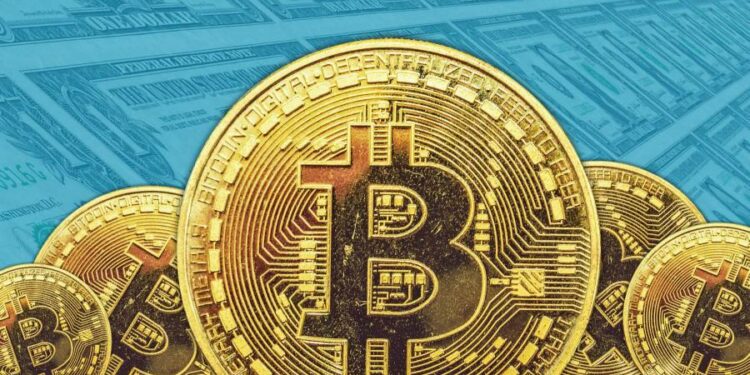The writer is an FT contributing editor
BTCS, a public crypto firm, this week offered its investors what it called a “bividend” — a one-time payout of five cents per share, payable in either dollars or bitcoin.
It’s a small company, only elevated to the Nasdaq last year. You could look at the bividend as a stunt, a canny bit of investor relations with a Twitter-friendly brand name. It’s a possibility that BTCS’s chief executive, Charles Allen, cheerfully acknowledges. He wanted people to see the value in the company and read its filings. Success!
Behind the bividend is a bet that, if correct, could have much larger consequences. Allen is offering to pay investors in bitcoin in part because BTCS has 90 bitcoins sitting on its balance sheet that have value, but no productive purpose. Bitcoin, according to Allen, is a unproductive asset, “just literally sitting there”. It might appreciate. But it doesn’t generate revenue, which has historically been the purpose of a publicly listed company.
BTCS was founded as a pure cryptocurrency company in what now seems like the Precambrian era in 2013. It started in ecommerce, selling products for bitcoin. It moved on to bitcoin mining, suffered through what Allen calls a “crypto winter”, then spent some time buying bitcoin and ethereum, thinking about what to do next. According to its last quarterly filing, the company now holds two kinds of cryptocurrencies, which sit on different parts of its balance sheet.
Along with dollar cash and prepaid expenses, the company holds $3.2m in “digital assets/currencies”. These are the 90 bitcoins, sitting in treasury, doing . . . nothing. The company also has $8.8m in “staked digital assets/currencies”, the core of its new strategy. The staked currencies are mostly ethereum. They have a job, and generated $1.2m in revenue last year (the number is unaudited, but is consistent with the company’s audited quarterly reports).
Again, these are small numbers. What matters is the distinction. The ethereum has a job. The bitcoin does not. BTCS has begun staking — placing ethereum and some other cryptocurrencies in a kind of digital escrow, vying for a chance to verify a ledger of transactions. The more coins you have staked, the higher the likelihood you’ll get to verify the ledger. The reward is a fee of more coins. The company is also running so-called validator nodes — staking pools that will bring in others’ coins from outside its balance sheet.
The bitcoin protocol is not designed for staking. Bitcoin, by design, supposed to just sit there, hopefully becoming more valuable, transferable if necessary. This is good if you hold bitcoin and are optimistic about its future. It is bad, however, if you’re a publicly listed company, trying to figure out how to produce revenue. The bet on bitcoin in particular has always been that the more people hold it, the more useful it will become. There’s a difference, however, between “holding” and “useful”.
The bividend is not, strictly speaking, a dividend — profit, paid out to shareholders. Rather, it’s a return of capital. Conveniently for shareholders, this makes the bividend tax free. It also makes it a bit like a share repurchase, a tacit confession that says here, you take this, because we don’t have any plans for it. If BTCS is right, bitcoin is headed for a strange twilight. It is not quite ready cash. Nor it is a productive asset.
After BTCS made its announcement Hanno Lustig, an economist at Stanford Graduate School of Business, pointed out that the company was part of a long tradition of paying out dividends in kind. In the 17th century, he wrote, the Dutch West India Company paid out dividends in cloves.
Other early modern joint stock companies used the same model. England’s Royal African Company paid out its dividend in gold coins that only over time came to be known as guineas, named for the African coast the gold came from. Guineas were a dividend first, and only became a unit of account over time. The joachimsthaler, the big silver coin that served as a model for taler and daler coins around the Baltic — and eventually what came to be known in the US as the Spanish dollar — was originally a dividend, too, paid out to Saxon joint-stock investors in a Bohemian silver mine.
But this isn’t quite what BTCS is doing. All these early-modern joint stock companies paid their in-kind dividends out of revenues. The Royal African Company exported gold from Africa — the gold itself was a revenue. The West India Company exported cloves. The Saxon joint stock companies mined silver. BTCS’s revenues, however, come in the form of ethereum, or the other coins on its balance sheet that it can stake. In its actual business, it does not earn bitcoin. According to Allen, the company may in the future pay out actual dividends in ethereum. But for the time being, it is merely paying a bividend — a return of capital in the form of bitcoin, an asset that has value, but no purpose.











